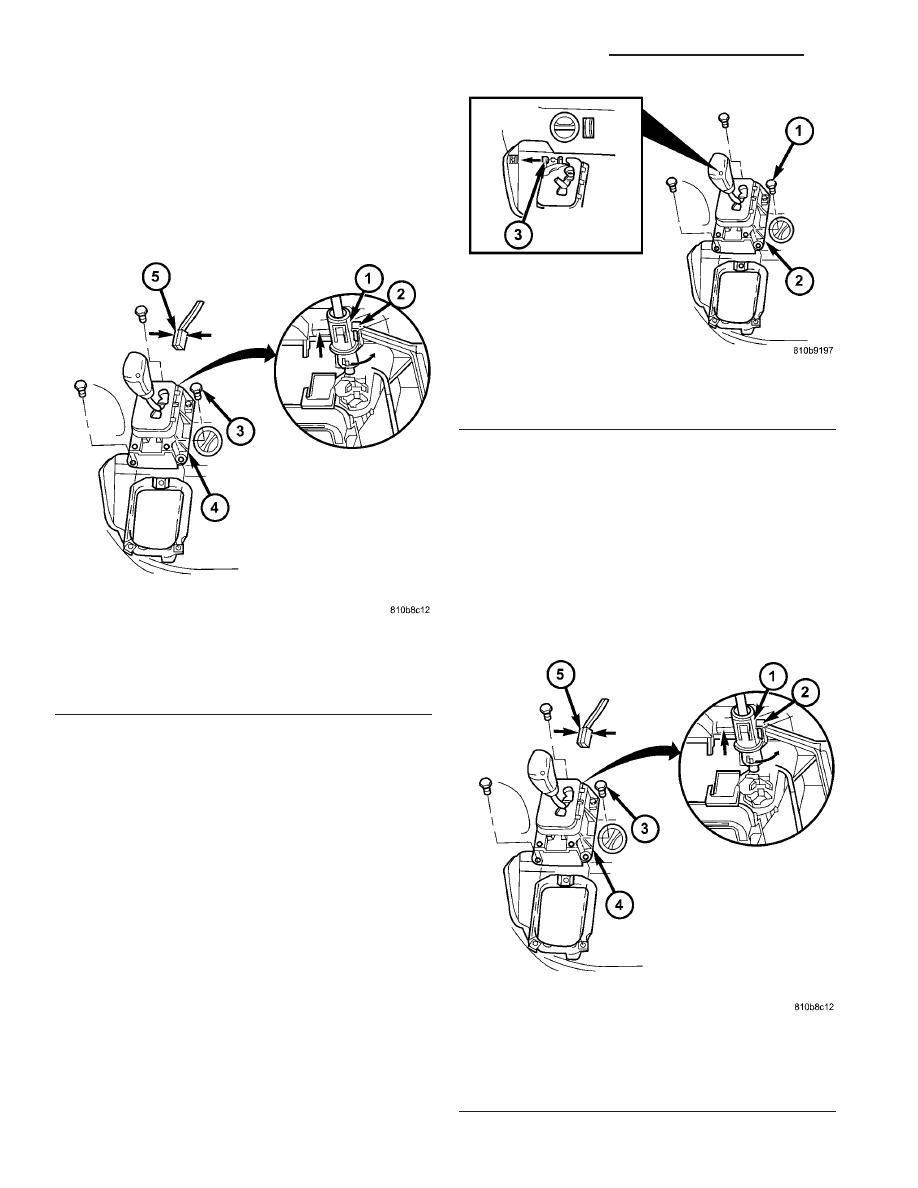Dodge Sprinter. Manual - part 300

(4) Disconnect the park lock cable coupling (1)
(Fig. 224) from the shift lever assembly (SLA). Press
locking tab (2) together and push coupling (1) against
the spring force into the SLA, twist through 90°
(right or left) and pull off.
(5) Disconnect connector plug (5) from SLA. When
disconnecting plug, press together at points shown
(arrows).
(6) Pry ball socket (4) of transmission shift cable
off ball knob at the SLA. Use a suitable slotted
screwdriver.
(7) Unscrew bolts (1) (Fig. 225).
(8) Move selector lever to position “P”.
(9) Remove the SLA (2) from the vehicle.
INSTALLATION
(1) Position the shift lever assembly (SLA) onto
the vehicle.
(2) Install the bolts to hold the SLA to the vehicle.
Tighten the bolts to 6 N·m (53 in.lbs.).
(3) Connect the park lock cable coupling (1) (Fig.
226) to the SLA. Press locking tab (2) together and
push coupling (1) against the spring force into the
SLA, twist through 90° (right or left) until locked.
(4) Connect the connector plug (5) to the SLA.
Fig. 224 Disengage Park Lock Cable From SLA
1 - PARK LOCK CABLE COUPLING
2 - LOCK TAB
3 - BOLT
4 - SHIFT LEVER ASSEMBLY (SLA)
5 - CONNECTOR
Fig. 225 Remove SLA
1 - BOLT
2 - SLA
3 - SHIFT CABLE
Fig. 226 Engage Park Lock Cable to SLA
1 - PARK LOCK CABLE COUPLING
2 - LOCK TAB
3 - BOLT
4 - SHIFT LEVER ASSEMBLY (SLA)
5 - CONNECTOR
21 - 170
AUTOMATIC TRANSMISSION NAG1 - SERVICE INFORMATION
VA